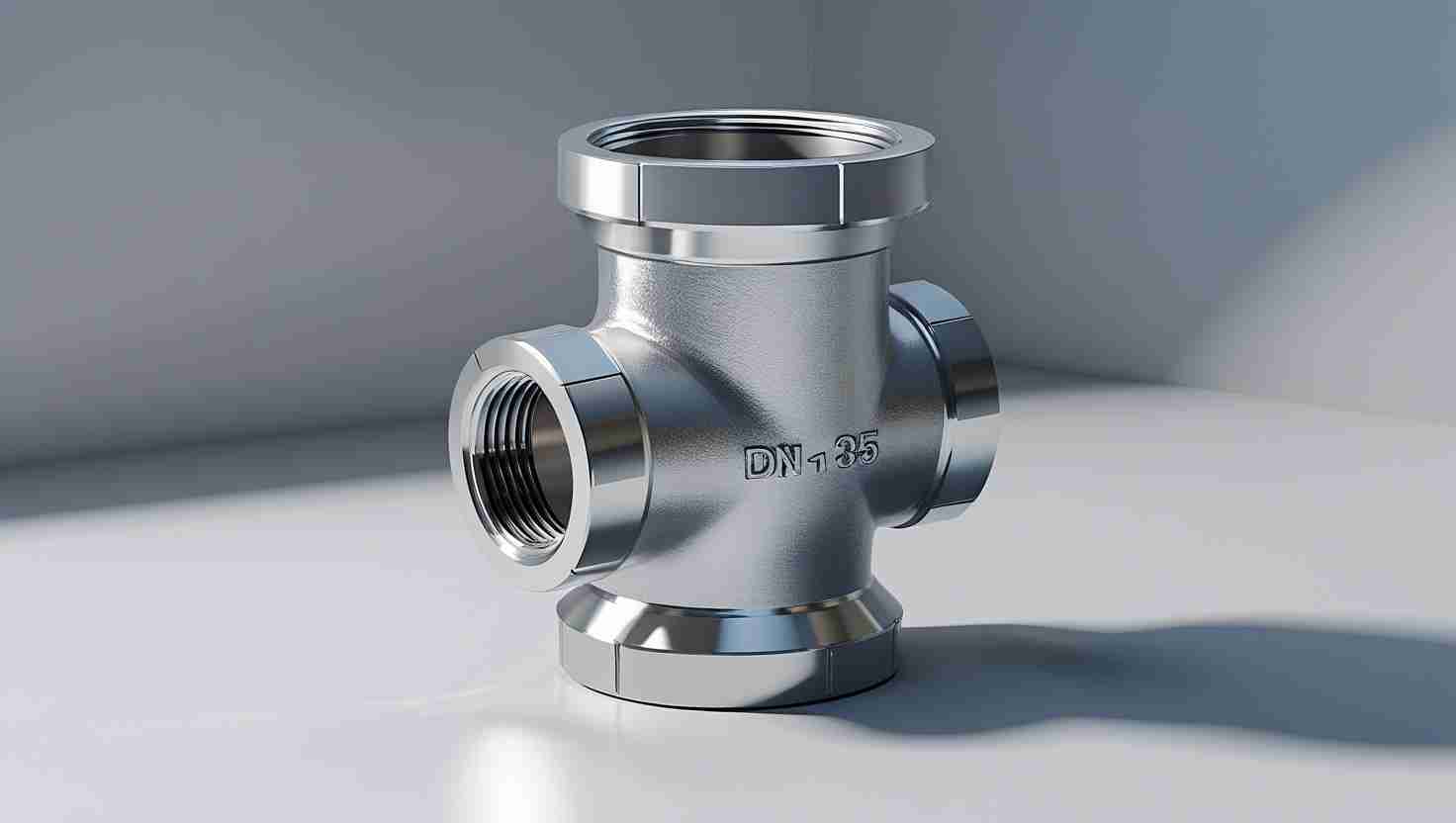Introduction
Single-mode fiber optics (SMF) serve as key infrastructure across telecommunications structures and medical devices and data transmission systems. The optimal reading light level in single-mode fiber optics represents a vital element in SMF performance. The efficiency-based light intensity, which allows signal transmission while avoiding signal distortion or loss, defines the optimal reading. Moisturizing the right amount of light helps both increase signal delivery quality while strengthening data communication stability.
Decisions in contemporary communication rely heavily on data transmissions, so fiber optic light levels become essential. The performance of the SMF reading light depends heavily on the optimal light level for signal transmission activities like streaming videos and making phone calls or transmitting medical data. This paper investigates optimal light levels together with their determinants and practical strategies to maintain and achieve them.
Understanding Light Levels in SMF
The data transmission mechanism through fiber optic light levels depends heavily on how intense the light becomes during transmission. Weak light may prevent desired communications signals from reaching their destination. Excessive strength levels of light can produce distorted communication signals. Lightraves efficiently through SMF under the combined impacts of fiber attenuation and wavelength as well as light intensity and wavelength. Maximizing communication efficiency relies on proper management, which delivers the best possible light power output.
The measurement of light levels within single-mode fiber optics utilizes dBm from fiber optics as a designation of decibel-milliwatts. The specific unit reveals to technicians if the light maintains proper levels. The strength of a signal becomes noticeable when the measurement reaches -20 dBm compared to -30 dBm. SMF signal quality needs these measurements understood for sufficient maintenance.
What Constitutes an Optimal Light Level?
Single-mode fiber optics require perfect illumination that does not exceed yet remains adequately strong with an ideal level measurement. Fiber optics and microwatt systems use dBm to quantify the light level. Single-mode fiber optics applications function best when operating within the -10 dBm to -30 dBm light intensity range. The optimal dBm range between -10 and -30 insures against signal degradation in single-mode fiber optics without saturating the receiver. SMF transmission efficiency depends on achieving and keeping this critical light balance.
The appropriate lighting level depends on the sort of application being used. Long-distance communication systems need elevated light signals to counteract fiber attenuation effects. SMF applications with brief distances benefit from reduced light levels because signal distortion becomes an issue. Light intensity optimization for SMF depends on technicians knowing these fundamental requirements.
Factors Affecting Optimal SMF Reading Light Levels
Multiple environmental elements determine what intensity of light should be used for reading SMF. Optimal SMF reading light levels depend on three main factors: fiber length, light source type for SMF, and environmental conditions, which encompass temperature and bending effects. Light levels receive influence from both the quality of fiber optic connectors and splices. Flawed connectors between fiber optic components will cause signal degradation and interruption.
Light wavelength functions as a critical factor that affects the reading measurement. When using single-mode fiber optics, practitioners mainly operate at the 1310 nm wavelength together with the 1550 nm band. Each wavelength has unique properties. The lower attenuation rate of the 1550 nm wavelength makes this optical frequency perfect for distributing signals across extended distances. Special applications demand that users select appropriate wavelengths to attain desired light power levels.
Measuring and Monitoring Light Levels
Technical staff relies on optical power meters and OTDR testing devices to determine the best light level for the system. Light intensity measurement and fiber issue detection function as key features of these testing tools. Quantitative accuracy depends on regular systematic checks of fiber optics. The measurement of light intensity provides protection against signal loss together with guaranteed system reliability in SMF.
Handheld optical power meters operate as devices to detect light intensity levels at particular locations within optical fibers. The fiber optic platform shows dBm readings that allow technicians to verify light level compliance. The testing performed by OTDR systems includes thorough evaluation of whole fiber assets to detect both breaks and bends that might impact signal performance in SMF transmission networks.
Challenges in Maintaining Optimal Light Levels
The challenge lies in sustaining ideal reading illumination levels expressed by SMF. The performance of systems becomes problematic because of three main issues: fiber attenuation combined with signal distortion while external interference remains a concern. Optimal light source performance requires the SMF to receive neither too much nor too little light intensity. Such challenges require both regular maintenance procedures with periodic troubleshooting actions.
Numerous environmental elements, including temperature inconsistency alongside external force applied to the fiber, affect the level of light measured by SMF. Too much bend in fiber leads to signal loss when using SMF. The optimal light power diminishes when conditions become excessively hot, which results in greater fiber attenuation. When designing and maintaining fiber optic systems, technicians need to take these factors into consideration.
Best Practices for Achieving Optimal SMF Light Levels
To achieve the optimal light level, follow these best practices:
- High-quality fiber optic connectors together with thorough splicing methods must be used.
- You should perform tests along with calibration assessments by using optical power meters and OTDR testing in a regular manner.
- Select an SMF light source between laser or LED technology based on what application you will use it for.
- Prevent damage to fibers by shielding them against outside environmental factors, including bending and temperature changes.
- Adhere to industry standards like ITU-T fiber standards and ISO/IEC fiber guidelines.
High-quality system components allow the fiber optic system to operate efficiently. Standard testing procedures combined with calibration methods enable detection of problems in SMF signal quality before they develop into serious signal degradation. The implementation of industry standards brings a consistent approach that provides reliable outcomes in various application environments.
Applications of Optimal SMF Light Levels
Several applications depend on using the correct light intensity with the shortest mean free path to illuminate. SDMF controls the delivery of fast, high-speed Internet services together with dependable telephone connections. Medical devices utilize this technology for feedback-dependent imaging and diagnostic processes. Industrial settings benefit from high-quality data transmission through its accurate automation and control systems operations. These practical SMF applications reveal that correct lighting levels need to be maintained.
The required light level in telecommunications systems preserves data transmission throughout extensive distances without facing major deterioration. Precise light settings help doctors view detailed human body images in medical imaging. The efficient functioning of machines depends on consistent data transmission in industrial automation systems.
Technical Standards and Guidelines
ITU-T fiber standards, together with ISO/IEC fiber guidelines, establish performance references for appropriate light levels used in single-mode fiber optics. Standards for different applications ensure their operation maintains both consistency and reliability. Following these standards remains necessary to both maximize energy efficiency in single-mode fiber optics and reduce signal degradation throughout SMF systems.
The standards provide comprehensive coverage of fiber optic system elements such as single-mode fiber light intensity together with wavelength specifications and attenuation data. The standards establish guidelines for performing inspections and system maintenance that secure proper functioning of fiber optic deployments throughout prolonged operational periods. Relying industries need to follow these standards because they use single-mode fiber optics in critical applications.

Comparison with Multimode Fiber (MMF) Light Levels
Light level specifications define the separation between single-mode fiber optics (SMF) and multimode fiber (MMF). Single-mode fiber demands enhanced light control because its relatively small core requires precise illumination techniques. The light-handling capacity of MMF remains higher, yet it operates within limited distances. Knowledge about these core differences enables selection of the proper fiber type for particular use cases where SMF vs. MMF light power management proves important in long-range data transmissions.
SMF works best for extended communications because the attenuation levels in its optical structure remain minimal. Applications in data center spaces function best with MMF because of its capabilities within restricted distances. Each application demands a particular fiber type selection that guarantees optimum light power output.
Impact of Wavelength on SMF Light Levels
Fiber optics single-mode performance directly relates to lighting levels according to the wavelength of light employed. Selected wavelengths for single-mode fiber optics transmission are 1310 nm and 1550 nm. Every wavelength among them demonstrates particular characteristics, including a lower fiber attenuation level at 1550 nm. Anti-reflective coated fiber optic cables let users pick wavelengths to enable maximum light power and increased SMF transmission efficiency.
The transmission of 1550 nm wavelengths over extended distances benefits from minimal fiber attenuation, while 1310 nm wavelengths achieve the best results over shorter transmission lengths. The ability for technicians to understand wavelength impact leads them to create efficient fiber optic systems.
Troubleshooting Common Issues
Actual readings may require investigative work because suboptimal SMF reading light levels appear. Fiber optic networks experience three main operational problems, which include inadequate signal strength and poor light quality, together with signal distortion and attenuation effects. The combination of optical power meters and OTDR testing devices enables accurate diagnosis of these fiber problems. Maintenance routines coupled with ITU-T fiber standards illustrate an effective method to prevent most of these issues.
Technicians use the light level measurement to detect problems, which could include poor fiber optic connectors and fiber attenuation when the light level is too low. Technical personnel adjust the light source for SMF when the light exceeds specified limits to normalize the reading. Through routine testing combined with maintenance procedures, fiber optic systems maintain optimal operational performance.
Future Trends in SMF Technology
Hollow-core fiber optics, alongside other developments, indicate a bright future for single-mode fiber optics performance. The innovations lower the amount of signal loss through fiber while enhancing its overall quality. Emerging technologies enable simpler control of SMF light levels, thus enabling enhanced performance in telecommunications and medical and industrial applications.
Hollow-core fiber optics hold promise by using air instead of glass to carry light, which decreases fiber attenuation and raises SMF transmission efficiency. New breakthroughs have heightened the efficiency and reliability of fiber optic systems, which will enable enhanced data transmission to meet increasing speed requirements.
Case Studies or Real-World Examples
Multiple industries succeed with optimal readings using SMF, which helps their success. The telecommunication infrastructure depends on correct light illumination for steady phone and internet operations. Medical imaging depends upon accurate light levels to provide proper diagnostic results. The importance of suitable light management becomes evident through practical single-mode fiber optic applications in the field.
Single-mode fiber optics serve as the communications foundation for high-speed internet delivery to locations where standard infrastructure does not exist. The organization of proper light levels preserves data transmission quality between distant locations by preventing major data loss. The precise measurement of light levels in hospital medical imaging relies on SMF as an essential technology.
Conclusion
Data transmission works best when the reading light level of SMF remains at its optimum point. Fiber attenuation combined with wavelength and light intensity knowledge allows technicians to achieve high signal quality by monitoring these parameters in SMF networks. The adoption of ITU-T fiber standards combined with optical power meters and OTDR testing tools supports achieving this objective. Hollow-core fiber optics innovations continue to enhance SMF transmission efficiency while establishing its fundamental status as a modern communication system backbone.
You may also like
FAQ about What Is an Optimal SMF Reading Light Level
It’s the ideal light intensity for single-mode fiber optics, measured in dBm, ensuring minimal signal loss and distortion.
It ensures high signal quality and reliable data transmission in applications like telecom and medical imaging.
Using tools like optical power meters and OTDR testing, which provide readings in dBm.
Factors include fiber attenuation, wavelength, light source, and environmental conditions like temperature.
Wavelengths like 1310 nm and 1550 nm impact fiber attenuation and signal quality.
Optical power meters and OTDR testing devices are used for monitoring.
Challenges include signal loss, distortion, and environmental factors like bending and temperature changes.
SMF requires precise light levels for long distances, while MMF handles higher light levels over shorter distances.
Use quality connectors, test regularly, choose the right light source, and follow ITU-T and ISO/IEC standards.
Advancements like hollow-core fiber optics will reduce attenuation and improve signal quality.





